Memories at the National Coach Museum
The pleasant visit to a space of memories of a unique collection of coaches, carrieges, berlins and much more, take us to a trip from the 16th to the 19th century along the National Coach Museum.
In the riverside of Belém located about seven kilometers from Lisbon, the National Coach Museum presents the technical and artistic progress of the animal traction transport, predominantly belonging to the Royal Portuguese House. Such vehicles were used by the european courts and the clergy until the appearance of the automobile.
The National Coach Museum was founded by the Queen D. Amélia de Órleans and Bragança in 1905. Over time, the requirements of the space were adapted, so that in 2005 has emerged a new and large building.
Location of the National Coach Museum
However before visiting the National Coach Museum, the invitation to breakfast at Pastéis de Belém historic pastry has awoken our taste early n the morning.
 At streets of Belém At streets of Belém |
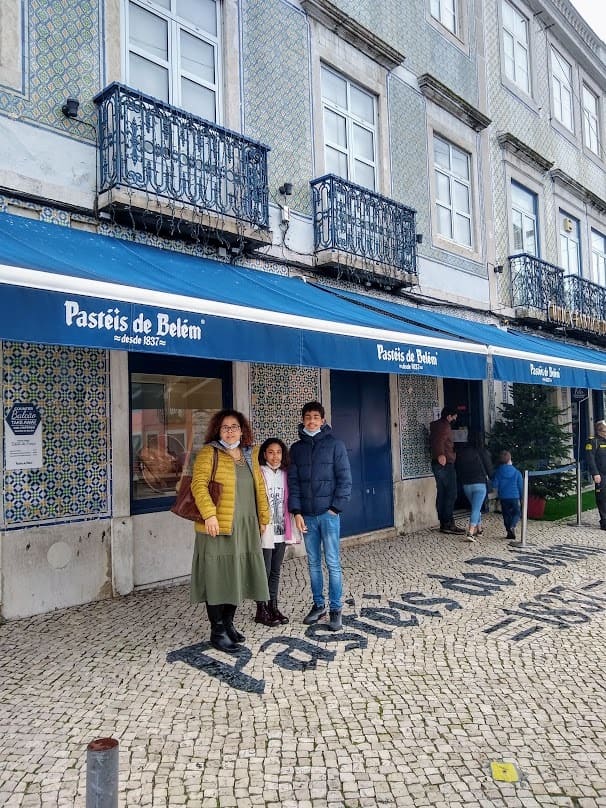 At the entrance of Pastéis de Belém (pastry) At the entrance of Pastéis de Belém (pastry) |
|
The tasty breakfast at Pastéis de Belém (pastry)
 A stop at the National Palace of Belém (Presidency) on the the way to the National Coach Museum A stop at the National Palace of Belém (Presidency) on the the way to the National Coach Museum |
 A view in the entrance of the National Coach Museum A view in the entrance of the National Coach Museum |
|
 Coach of the King Philip II (Philip III of Spain). It is the oldest coach in the museum being used in 1619 by this monarch on the journey between Spain and Portugal (from 16th-17th century) Coach of the King Philip II (Philip III of Spain). It is the oldest coach in the museum being used in 1619 by this monarch on the journey between Spain and Portugal (from 16th-17th century) |
|
 Coach of the Queen D. Maria Francisca of Sabóia. This vehicle was offered by her cousin King Louis XIV of France when she married in 1666 the King of Portugal D. Afonso VI (Box with the Royal Arms of Portugal-17th century) Coach of the Queen D. Maria Francisca of Sabóia. This vehicle was offered by her cousin King Louis XIV of France when she married in 1666 the King of Portugal D. Afonso VI (Box with the Royal Arms of Portugal-17th century) |
 Coach of the Queen D. Maria Ana of Austria offered by her brother the Emperor Joseph I for the wedding with the King of Portugal D. João V (Gilt carved box-17th century) Coach of the Queen D. Maria Ana of Austria offered by her brother the Emperor Joseph I for the wedding with the King of Portugal D. João V (Gilt carved box-17th century) |
|
 Coach of D. João V King of Portugal. The front is decorated with young women known as “Espagnolettes” (18th century) Coach of D. João V King of Portugal. The front is decorated with young women known as “Espagnolettes” (18th century) |
 Crown Coach. Coachf used by the ambassador Ribeira Grande earl in the reign of D. João V with the mission to end the War of Sucession of Spain (Utreuqe 1715 Peace Treaty). On the roof there is a crown symbolizing the Royal Power (early 18th century) Crown Coach. Coachf used by the ambassador Ribeira Grande earl in the reign of D. João V with the mission to end the War of Sucession of Spain (Utreuqe 1715 Peace Treaty). On the roof there is a crown symbolizing the Royal Power (early 18th century)
|
|
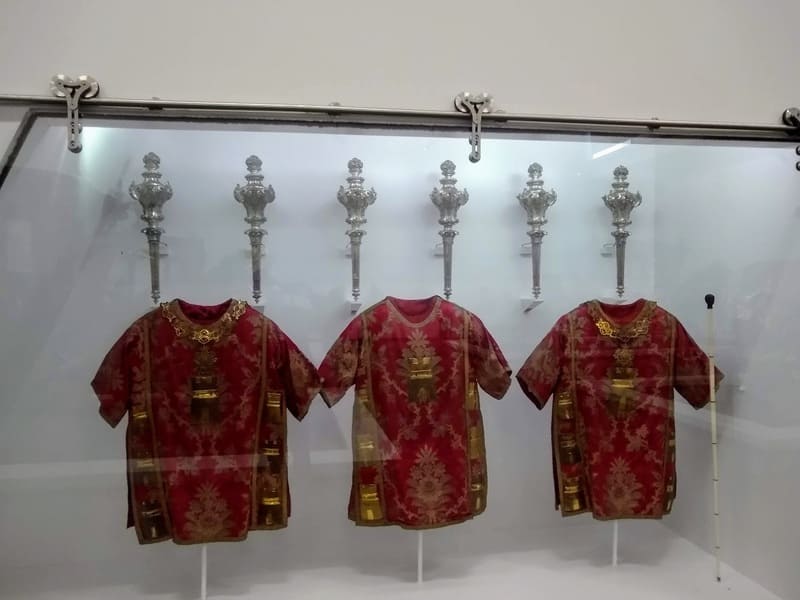 Kings of Arms tunics and golden silver necklace from the time of the King D. José I of Portugal (18th century) Kings of Arms tunics and golden silver necklace from the time of the King D. José I of Portugal (18th century) |
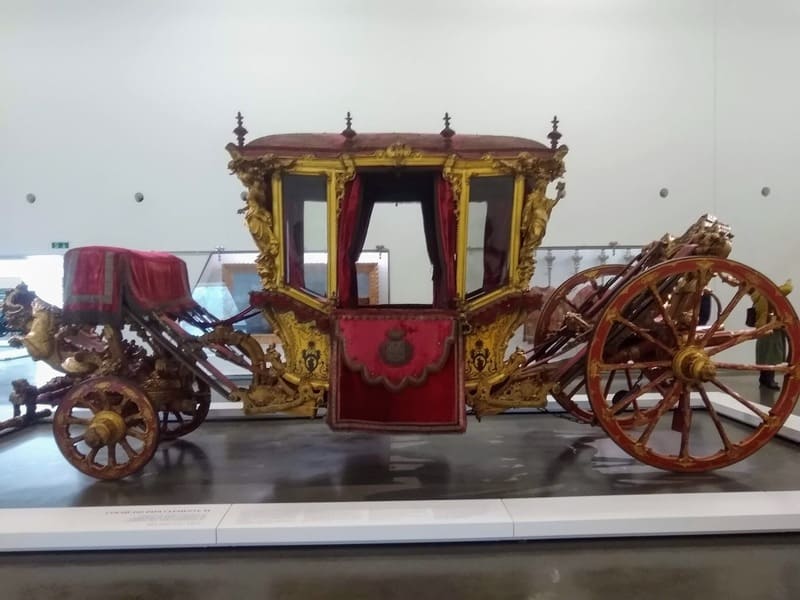 Coach of Pope Clement XI. This vehicle was offered by the Pope to the King of Portugal D. João V in 1715 Coach of Pope Clement XI. This vehicle was offered by the Pope to the King of Portugal D. João V in 1715 |
|
Embassy Coach set. These paraded in 1716 in Rome as part of the procession of the Embassy of the Kingdom of Portugal sent by the king of Portugal D. João V to the Pope Clement XI.
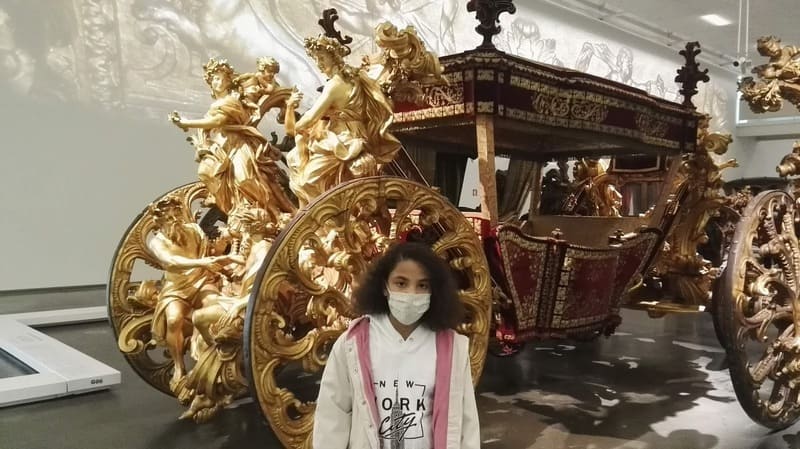 Oceans Coach. Example of a triumphal vehicle related to the connection of the Atlantic and Indic Ocean (Cape of Good Hope-from 18th century) Oceans Coach. Example of a triumphal vehicle related to the connection of the Atlantic and Indic Ocean (Cape of Good Hope-from 18th century) |
Oceans Coach. Example of a triumphal vehicle related to the connection of the Atlantic and Indic Ocean (Cape of Good Hope-from 18th century)
|
|
King D. José I Coach. One of the model of Portuguese Baroque adorned by the indigenous peoples of Brazil in an allusion to the first contacts with Brazil
 Berlin of the Royal House with the Portuguese Royal Arms shield. The Berlins arise in the city of Berlin (second half 17th century) Berlin of the Royal House with the Portuguese Royal Arms shield. The Berlins arise in the city of Berlin (second half 17th century) |
 Table Coach. Vehicle used in 1729 in the ceremony at the “Exchange of Princesses” on the border between Portugal and Spain, on the river Caia. D. João V, gave the hand of her daughter Princess D. Maria Bárbara to Fernando VI of Spain and Filipe V of Spain gave her daughter hand to marry the future King of Portugal D. José I Table Coach. Vehicle used in 1729 in the ceremony at the “Exchange of Princesses” on the border between Portugal and Spain, on the river Caia. D. João V, gave the hand of her daughter Princess D. Maria Bárbara to Fernando VI of Spain and Filipe V of Spain gave her daughter hand to marry the future King of Portugal D. José I |
|
| At the center, the Portuguese Harness of Tire (from 18th century) |
 Berlin of the Royal House in rocaille style with mythological scenes on the door (from 18th century) Berlin of the Royal House in rocaille style with mythological scenes on the door (from 18th century) |
|
 Gala Carriage to transport the Patriarchs of Lisbon (from 19th century) Gala Carriage to transport the Patriarchs of Lisbon (from 19th century) |
 Berlin of Bed for long journeys (from early 19th century) Berlin of Bed for long journeys (from early 19th century) |
|
 Professional Berlin for religious procession (from 18th century) Professional Berlin for religious procession (from 18th century) |
 Chaise of Plumes. Vehicle that appeared in Germany in 17th century. They could have two or four wheels being very popular in Lisbon either on the daily route or for long distances Chaise of Plumes. Vehicle that appeared in Germany in 17th century. They could have two or four wheels being very popular in Lisbon either on the daily route or for long distances |
|
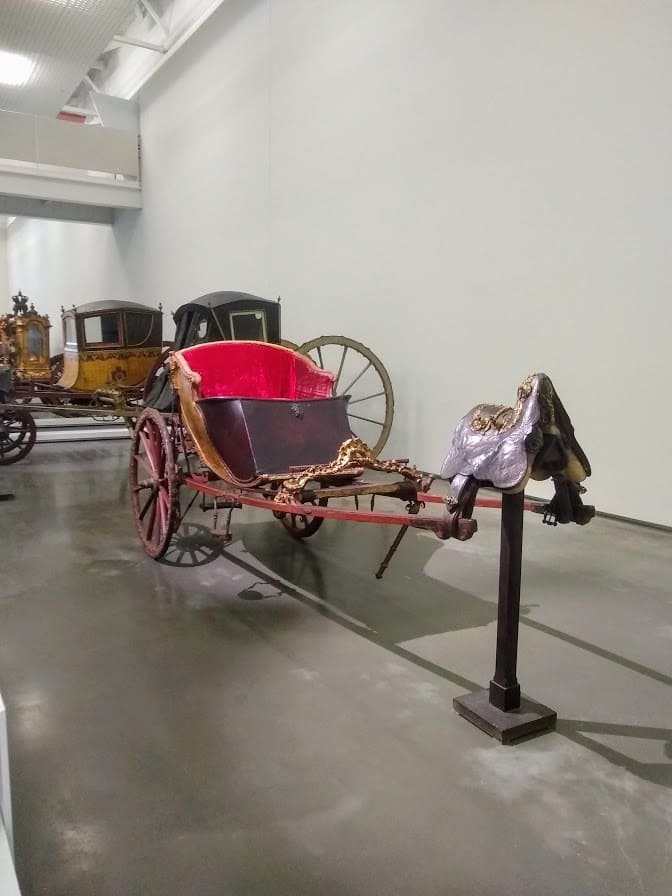 Model of a Royal Family two-wheeled stroller used in the gardens of its palaces (from 18th century) Model of a Royal Family two-wheeled stroller used in the gardens of its palaces (from 18th century) |
 Ride Car Collection usually for young people and ladies. The front car of the Vitoria collection belonged to Queen D. Amélia of Orléans and Bragança (from 19th century) Ride Car Collection usually for young people and ladies. The front car of the Vitoria collection belonged to Queen D. Amélia of Orléans and Bragança (from 19th century) |
|
 Model of a Litter (18th century) and at the bottom a Sedan Chair (18th-19th centuries). The Litters (without wheels) were carried by horses in narrow spaces with difficult access while the Sedan Chairs were carried by two or four footman for use in small trips Model of a Litter (18th century) and at the bottom a Sedan Chair (18th-19th centuries). The Litters (without wheels) were carried by horses in narrow spaces with difficult access while the Sedan Chairs were carried by two or four footman for use in small trips |
Strollers for princes and princesses used in parks and gardens of palaces
|
|
 Carriage of D. Maria II (landau) from the city of Landau in Germany (from 19th century) Carriage of D. Maria II (landau) from the city of Landau in Germany (from 19th century) |
 Landau of the King D. Pedro V (from 19th century) Landau of the King D. Pedro V (from 19th century) |
|
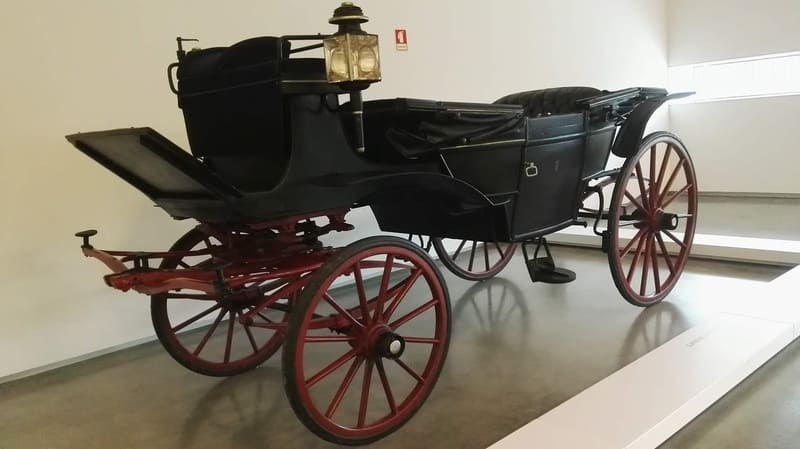 Landau of the Regicide. Vehicle associated with the tragic event of the assassination in 1908 of the King of Portugal D. Carlos I accompanied by his son Prince D. Luís Filipe thus putting an end to the monarchy in Portugal Landau of the Regicide. Vehicle associated with the tragic event of the assassination in 1908 of the King of Portugal D. Carlos I accompanied by his son Prince D. Luís Filipe thus putting an end to the monarchy in Portugal |
 Mail Coach. Vehicle used to transport official and passenger mail (19th century) Mail Coach. Vehicle used to transport official and passenger mail (19th century) |
|
 Vehicles for the transportation of prisoners (19th-20th centuries) Vehicles for the transportation of prisoners (19th-20th centuries) |
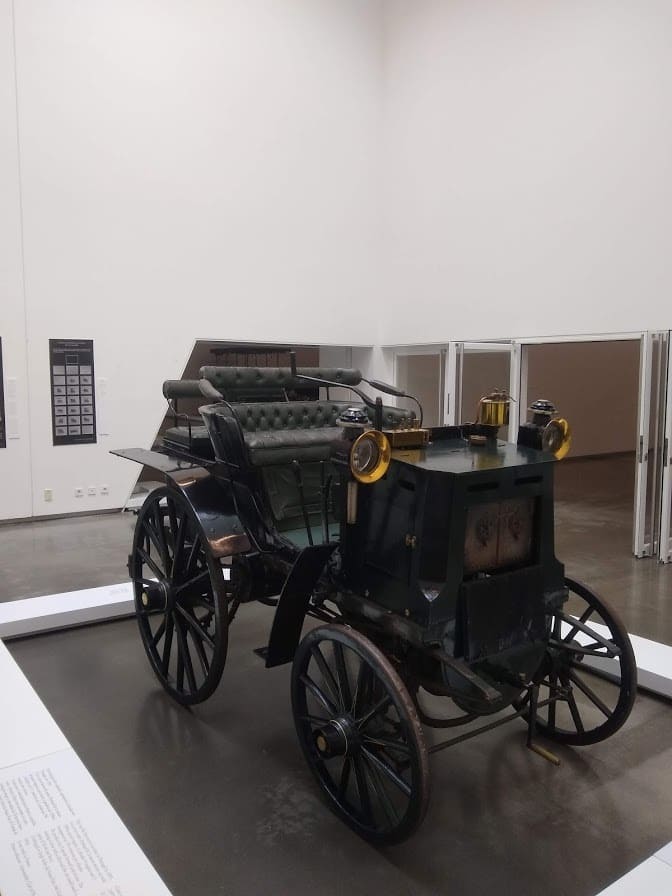 First automobile in Portugal (1895) of the Panhard & Levassor brand with three speeds forward and reverse. It reached a top speed of 26km/h First automobile in Portugal (1895) of the Panhard & Levassor brand with three speeds forward and reverse. It reached a top speed of 26km/h |
|
Atlanta Monowheel. A creation for the future (23rd century)
After visiting the National Coach Museum in Belém, we did not miss the opportunity to walk along its beautiful gardens, always very relaxing and pleasant.
One of the leisure areas in the garden of Belém
 A view of the lakes in Belém A view of the lakes in Belém
|
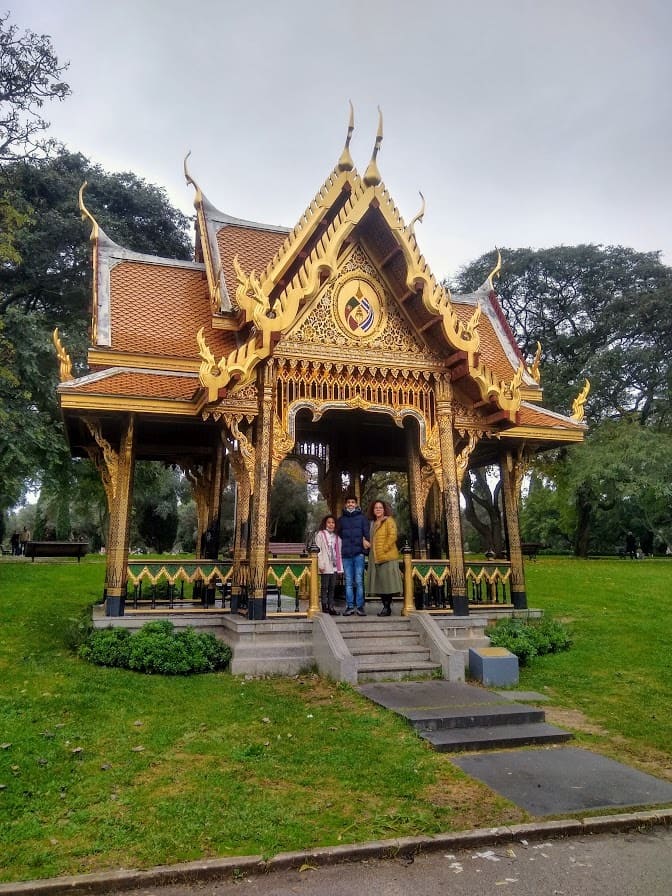 In the Thai pavilion In the Thai pavilion
|
|
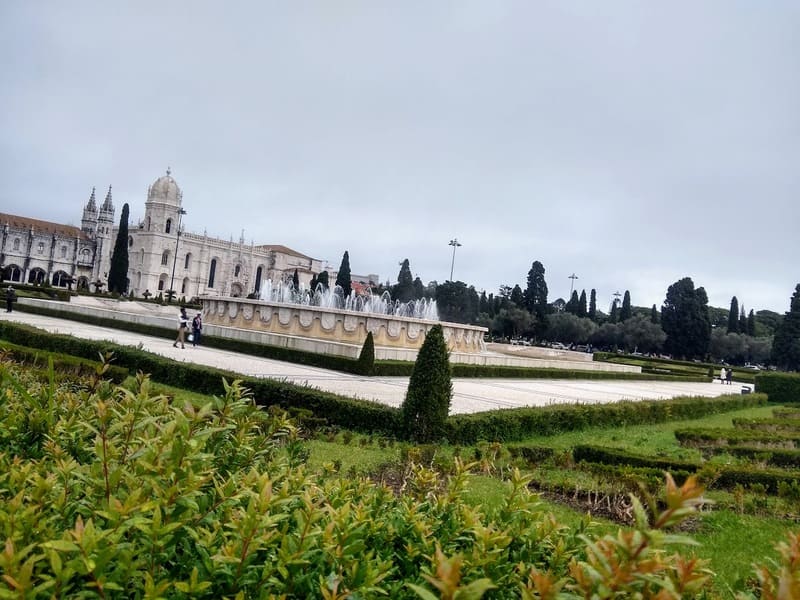 Behind the Monastery of Jerónimos Behind the Monastery of Jerónimos |
 The beautiful fountain in Belém The beautiful fountain in Belém |
|
Our satisfaction selfie
To complete the day of this fantastic tour, we lunch at Adega Típica da Tala restaurant and we did not regret it, as it was delicious!
 Portuguese stew Portuguese stew |
 Picanha Picanha |
|
And so it was the description of our visit to the National Coach Museum, which portrays the exhibition of vehicles from Portugal and European courts since the 16th century, a cultural and historical reference space from different ages.
We hope one day our readers and travel lovers will be able to visit this fantastic museum located in the beautiful area of Belém.
References National Coach Museum
Thanks to Manuel Manero for blogging recommendations
Please leave your feedback
|
Rui Vasconcelos
Follow us
|
Plugin: Facebook plugins comments
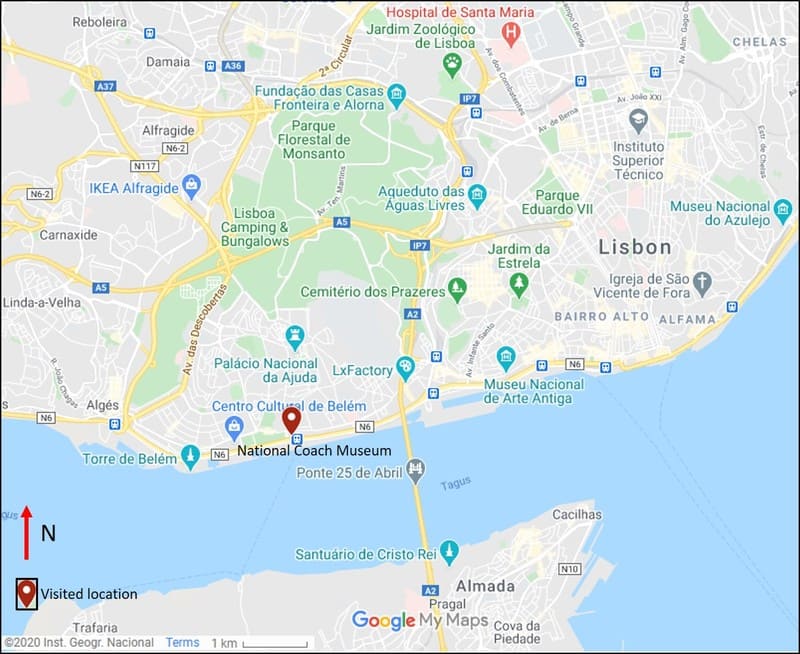 Location of the National Coach Museum
Location of the National Coach Museum The tasty breakfast at Pastéis de Belém (pastry)
The tasty breakfast at Pastéis de Belém (pastry) 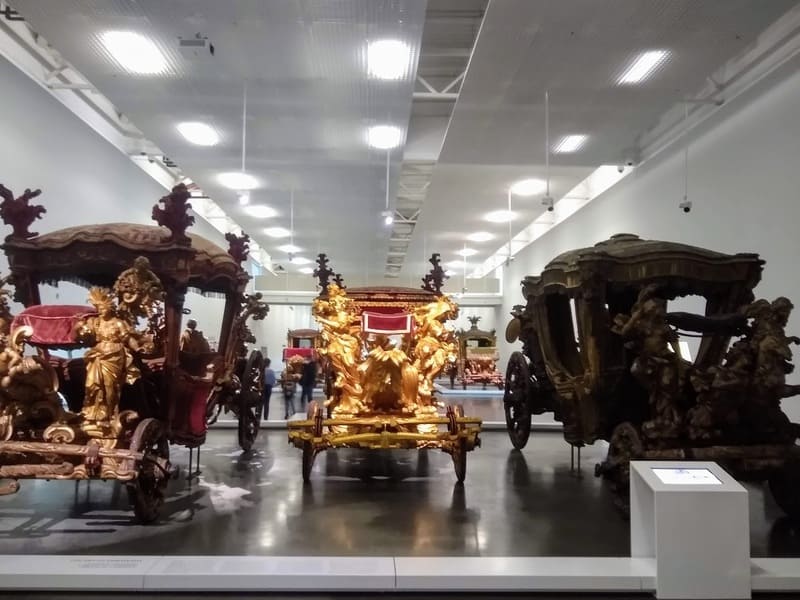 Embassy Coach set. These paraded in 1716 in Rome as part of the procession of the Embassy of the Kingdom of Portugal sent by the king of Portugal D. João V to the Pope Clement XI.
Embassy Coach set. These paraded in 1716 in Rome as part of the procession of the Embassy of the Kingdom of Portugal sent by the king of Portugal D. João V to the Pope Clement XI. King D. José I Coach. One of the model of Portuguese Baroque adorned by the indigenous peoples of Brazil in an allusion to the first contacts with Brazil
King D. José I Coach. One of the model of Portuguese Baroque adorned by the indigenous peoples of Brazil in an allusion to the first contacts with Brazil 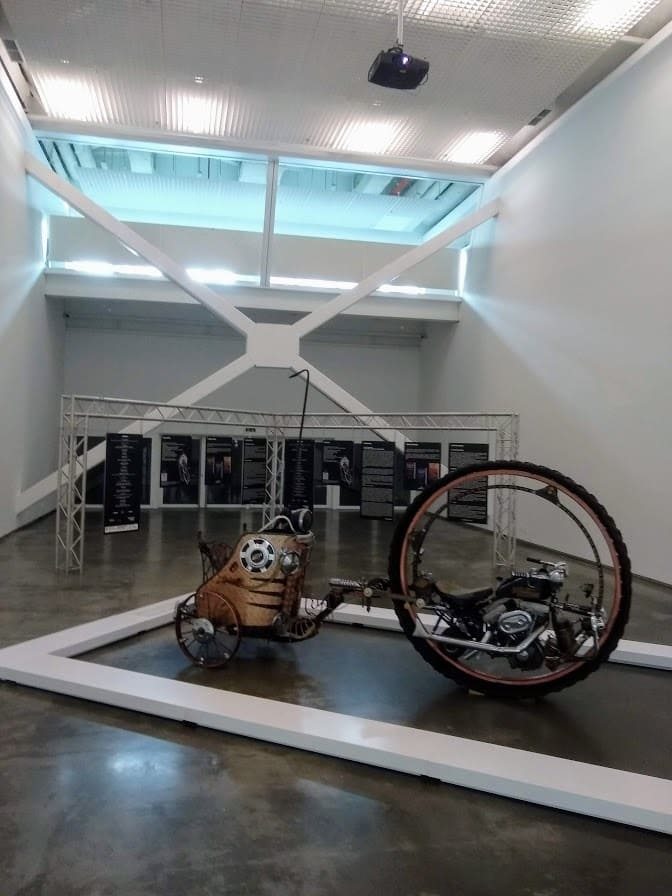 Atlanta Monowheel. A creation for the future (23rd century)
Atlanta Monowheel. A creation for the future (23rd century) One of the leisure areas in the garden of Belém
One of the leisure areas in the garden of Belém 






















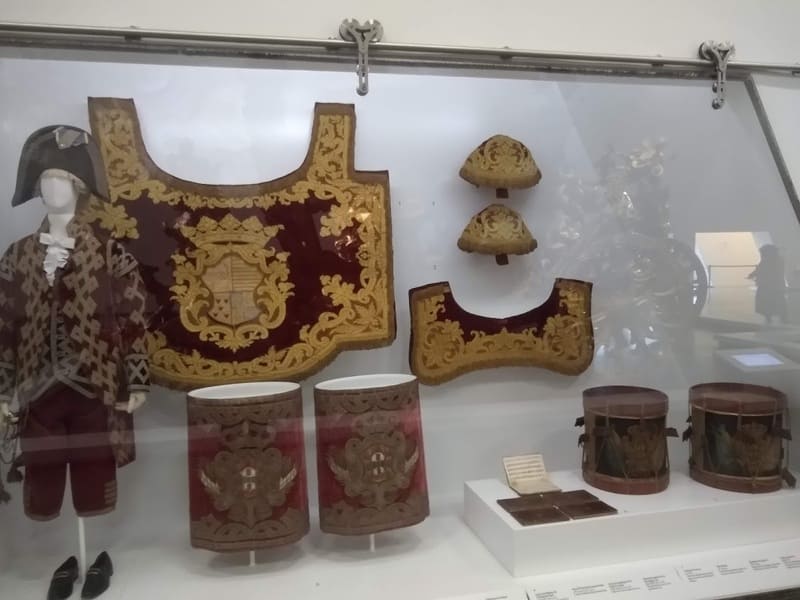


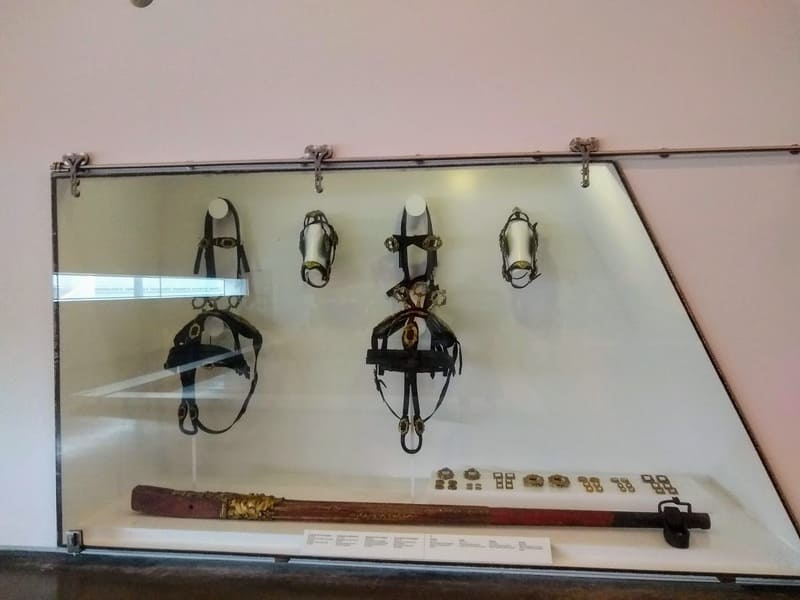













 Vehicles for the transportation of prisoners (19th-20th centuries)
Vehicles for the transportation of prisoners (19th-20th centuries)  First automobile in Portugal (1895) of the Panhard & Levassor brand with three speeds forward and reverse. It reached a top speed of 26km/h
First automobile in Portugal (1895) of the Panhard & Levassor brand with three speeds forward and reverse. It reached a top speed of 26km/h






